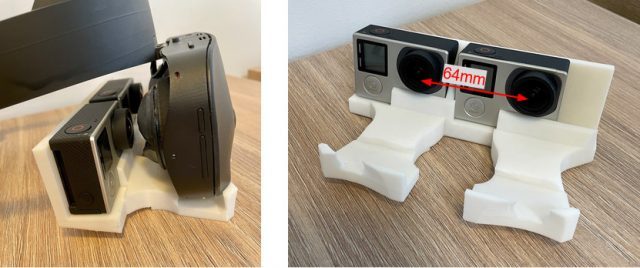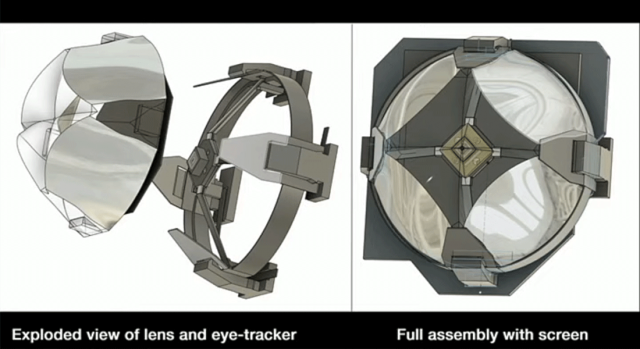French startup Lynx, which is designing a mixed reality headset (capable of both AR and VR), today revealed the first look through its novel optics.
The Lynx R-1 headset was first announced last year as a standalone headset centered around passthrough augmented reality. It’s said to include a Snapdragon XR2 processor, eye-tracking, and unique optics which the company calls a “four-fold catadioptric freeform prism.” It’s expected to launch this year, priced under $1,500.
The novel optics make the company’s first through-the-lens footage, which was revealed today, especially interesting.
While you’d be mistaken for thinking this is a transparent display (like HoloLens or Magic Leap), what you’re looking at above is actually video passthrough AR, which means cameras are feeding the outside view into the headset’s display while the virtual objects are rendered onto the scene. A photo shared by the company on Twitter showed how the footage was captured using GoPro cameras directly behind the lenses.

The benefit of using video passthrough to achieve AR is that the virtual objects can be completely opaque and appear more realistic. With existing transparent AR headsets, virtual objects are partially transparent because transparent displays can’t fully block incoming light.
Lynx also highlights the fact that it has designed its headset to minimize the bezel’s occlusion of the user’s real peripheral view (which can be see on the left of the video). The company says this is essential for enterprise use-cases where the user needs to be aware of their surroundings.
Beyond the impressive passthrough footage, we’re also getting our first look at how the world looks through the headset’s unique optics, which manage to hide an eye-tracking camera directly behind the lens.

Indeed, in the footage there’s really no telling that there’s an eye-tracking camera hidden directly in the center of the lens, though it’s possible to see some artifacts from the four prisms that come together to present a singular image. Granted, it’s surprising how little distortion there appears to be at the seams. There’s no telling yet whether this will be more or less visible to the naked eye.






